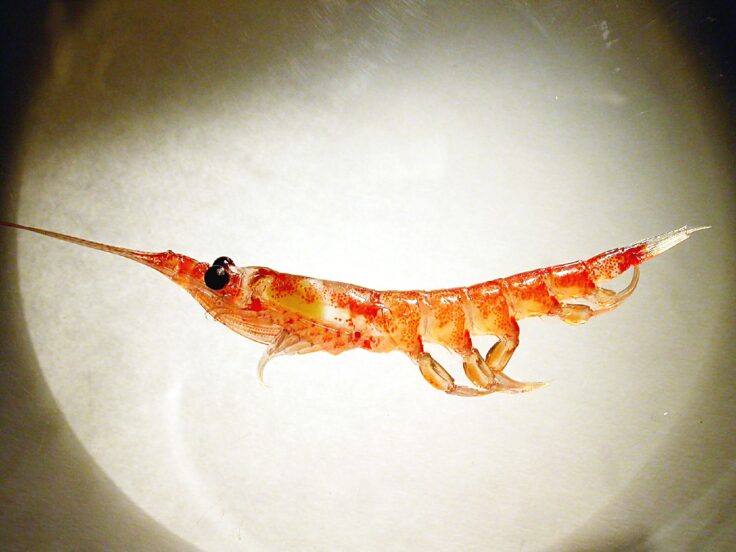A new study shows that Antarctic krill behave in a way that could accelerate the transport of atmospheric carbon to the deep ocean.
Antarctic krill form some of the highest concentrations of animal biomass in the world’s ocean and are the main food for vast numbers of marine predators like whales, seals and penguins as well as fish. Using advanced acoustic technology to track small scale movements in approximately 2000 krill swarms, the study, which is published in the journal Proceedings of the Royal Society B this week (13 December 2017), found that krill continuously move up and down within swarms in a behaviour called satiation sinking.

Krill swarms are often so thick that only those individuals towards the upper parts of the swarm are in the feeding layers near the surface of the ocean. However, the study reveals that these krill sink down once they have fed and are replaced by hungry krill swimming up from the layers below. Through performing this movement, krill produce their carbon rich faecal pellets in the lower parts of the swarm, meaning that the pellets have a much greater chance of making it to depth and taking carbon out of circulation.
Co-author and ecological modeller Dr Sally Thorpe from British Antarctic Survey (BAS) says:
“This behaviour has previously been observed in laboratory studies on individual krill onboard our research vessel the RRS James Clark Ross. What’s really exciting in this study is that we now have evidence that suggests that krill perform satiation sinking in swarms in the open ocean and not just in the lab. This knowledge of the behaviour of krill will help us to improve models of the transfer of carbon to the deep sea.”
Lead author and ecologist Prof Geraint Tarling from BAS says:
“This new finding could equate to krill sequestering 23 million tonnes of carbon to the deep sea each year, equivalent to annual UK residential greenhouse gas emissions.”
Read the study here
